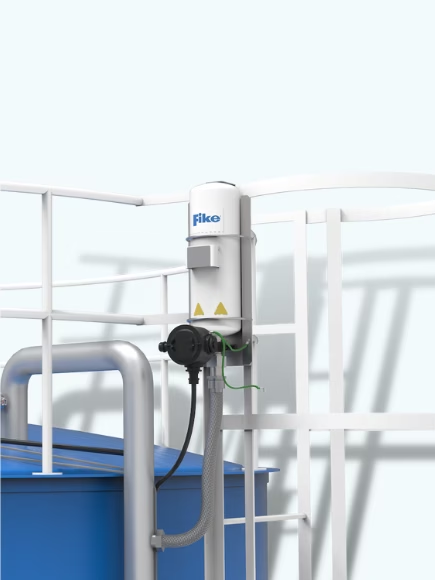Silos & Bulk Storage
Bulk storage may be protected with “passive” or “active” systems depending on several factors such as the location of the equipment, the aggressiveness of the dust, lower total cost of ownership, and more. Passive explosion protection systems react to a deflagration’s pressure, while active explosion protection includes electronic detection and control which activates connected systems within milliseconds of detection.
How Does It Work?
Test Protection On Your Silo
This easy-to-use tool helps confirm which protection methods are available for your equipment based on its handled dust type, size, location and more. Results and recommendations are then emailed to you for your records.
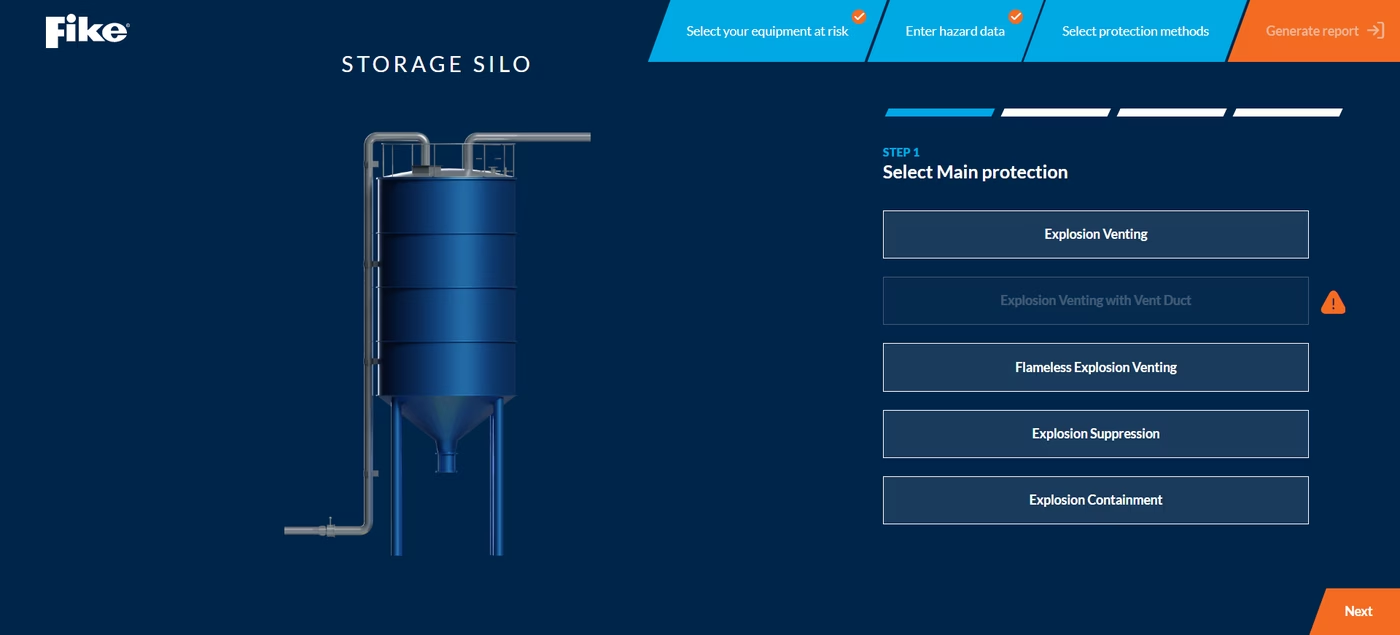
Dust Hazards & Ignition Risks
Silos are filled with product by truck, bucket elevator or pneumatic conveyor, all of which have the likelihood of producing a dust cloud during the filling process. If one of the following ignition sources reach the dust cloud, a devastating explosion may occur:
- Electrostatic “cone discharge” from charged bulk product onto the stored product surface during filling.
- Sparks and embers entering the silo during the filling process.
- Smouldering of stored product.
If the resulting explosion pressure wave is higher than the silo’s design pressure, catastrophic damage to both the equipment and its surroundings may occur. Furthermore, unprotected explosions may travel into interconnected pipes and vessels, creating additional damage - sometimes more devastating than the initial deflagration itself.
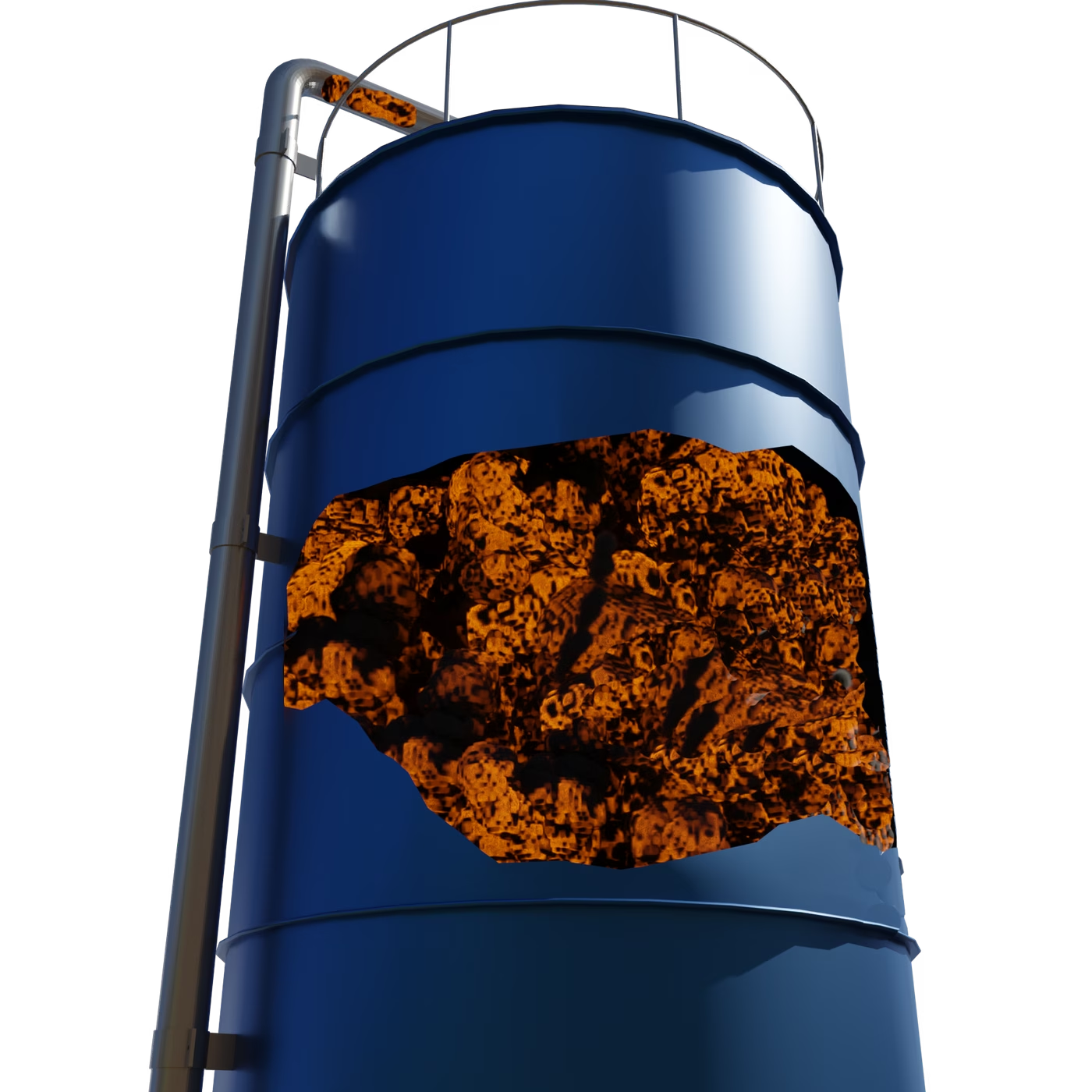
The Solutions
Explosion prevention and good housekeeping efforts may be employed to reduce these ignition risks found in silos. Some of these preventative methods may include:
- Limit electrical diameter of silo by conductive inserts.
- Spark or ember detection on dusty air inlet and spark suppression or isolation before it enters the silo.
- Carbon monoxide monitoring at the roof, and if detected, inject inert gas.
However, because the elimination of all potential ignition sources and airborne dust inside silos is impossible, explosion mitigation systems are required for both protecting not only workers, equipment and business continuity, but also to comply with NFPA standards.
Explosion protection methods may include an active system, which uses sensors to detect explosion pressure waves, flames or sparks, and then activates devices such as a suppression bottle or an explosion isolation valve; or a passive system in which vent panels and explosion isolation valves are actuated by the pressure wave generated by the explosion itself.
While passive solutions are typically more cost effective to install and maintain, active systems suppress the explosion in its incipient stages minimizing damage and lowering the risk of post-event fires inside the protected equipment.
Regardless of the type of system, any explosion protection strategy must include devices to protect both the silo from the initial deflagration as well as downstream and upstream equipment from secondary explosions.
1. Protecting the Vessel: Explosion Venting
When a deflagration occurs, vent panels serve as the weak point of the enclosure and provide a pathway for expanding pressures and flames to escape. Preferably vent panels are installed on the silo roof to minimizing the impact on the fillable silo volume and preventing recoil forces causing structural damage during an explosion event.
Explosion venting is relatively inexpensive compared to other protection methods and requires little maintenance, but a large external exclusion zone must be present and post-explosion fires may take place inside the silo.
If a sufficient external exclusion zone is not available or when the silo is installed indoors flameless venting may provide a potential solution. A flameless venting device is placed on top of the explosion vent panel and contains a flame filter that extinguishes the explosion flames. An integrated dust retention screen prevents unburnt fuel from being discharged preventing secondary explosions to take place outside the silo.
Additional vent accessories such as weather covers are available to allow installation in even the harshest conditions. Hygienic explosion vents are also available for food storage silos where CIP cleaning is applied.
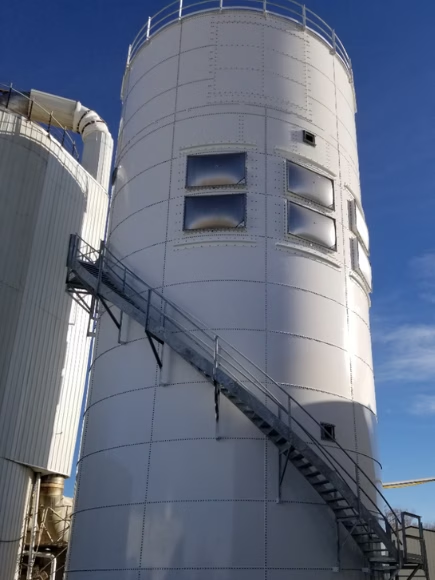
2. Protecting the Vessel: Explosion Suppression
Similar to explosion venting, explosion suppression systems are also designed to mitigate the initial deflagration. When the incipient stages of a deflagration are detected, a Fike HRD bottle is activated to inject suppressant powder into the silo to suppress the deflagration - all within milliseconds of ignition.
Suppression systems may be recommended or required in favor of venting solutions for the following reasons:
- Extinguishes the flame within the silo, reducing fire damage potential.
- Eliminates the flame release and greatly reduces the pressure path associated with explosion venting.
- Largely eliminates the discharge of toxic or hazardous materials outside of the dust collector enclosure.
HRD suppression bottles are installed on the roof or top-side wall and evenly distributed to ensure suppressant powder reaches the entire silo volume and to balance reaction forces during activation. Telescopic spreader nozzles with abrasion-resistant process covers are used to protect against erosion during silo filling and emptying.
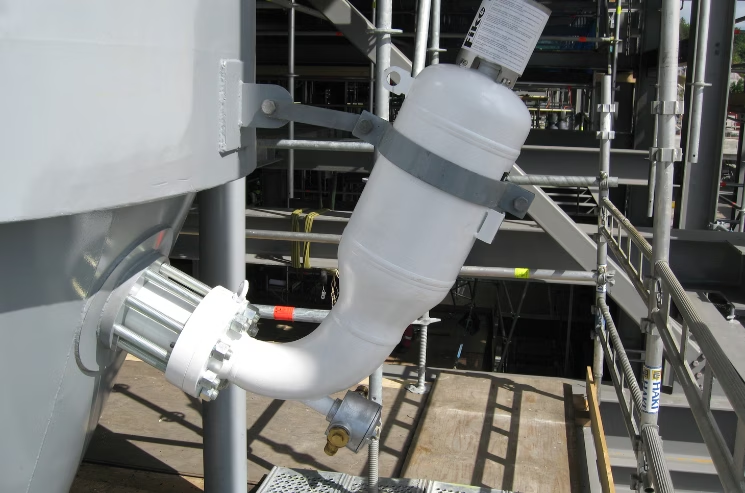
3. Protecting Connected Equipment: Isolation
Stopping an explosion from spreading upstream and downstream into connected pipes and equipment is as important as containing the initial deflagration itself.
If flame is allowed to propagate to interconnected vessels, it can lead to pressure piling, where the pressure is built up in the adjoining vessel prior to the flame arriving. The ensuing deflagration in this connected vessel then starts at an increased pressure with correspondingly more serious consequences, both in terms of the rate of combustion and final pressure.
The product inlet (pneumatic filling line and gravity filling line) are often protected with active mechanical barriers (pinch valves or gate valves), as passive mechanical barriers are at risk of clogging due to the large amounts of product conveyed into the silo. Chemical isolation may also be used if the silo volume does not exceed chemical barrier limits. Furthermore, active mechanical barriers may also serve as spark suppressors/isolators.
If a dedusting line is installed, it may be isolated with a variety of protection methods, including a diverter, float valve, gate valve or chemical barrier. The Fike application’s team will ensure the most reliable isolation method is chosen for the unique application.
The product outlet may not require protection if the rotary valve is third-party approved as an explosion isolation device and activates quickly enough upon explosion detection. If the rotary valve isn’t capable of explosion isolation, a chemical barrier may be recommended if enough space exists in the duct.
